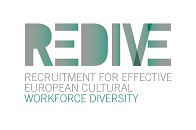Recruiting for workforce cultural diversity: ambition or reality?
Flexibility for workers from EU member states to move freely across Europe for work has been one of the central tenets of the European Community from the very beginning. As that community continues to expand, is the politicians’ dream being realised? Has greater mobility led to greater cultural diversity within the workforce? And how far are European companies actively seeking to promote and increase it?
New EU-funded research by RSM and research partners in Spain, Portugal and Poland reveals a mixed picture. A survey of companies from across nine member states showed that around 75% of the companies – typically larger companies with an established or growing international focus – saw cultural diversity as a strategic priority.
But, as dr. <link people dirk-van-dierendonck>Dirk van Dierendonck of the Erasmus Centre for Human Resource Excellence makes plain, commitment to a notion does not necessarily mean that it gets translated fully into practice:
“We saw that relative to other aspects of the business, cultural diversity is lower down the priority ladder. The apparent strategic importance is only translated into specific practice to a limited extent. There needs to be support at top management, i.e. board, level before a diversity programme has any chance of success within the company. And it needs to be part of a wider process of change management, with a clear vision that is obvious to all.”

Van Dierendonck is coordinator of the research part of a two-year cross-European REDIVE project on recruitment for effective cultural diversity in the workforce which has received funding from the EU’s Lifelong Learning Programme.
“The project was designed to investigate what companies are actually doing on this issue and to give us a better understanding of the practices that are helpful in creating cross-cultural diversity within organisations,” he explains. “We wanted to know what companies do in terms of hiring people and in what ways they can make it easier for people within the organisation to take on staff from different backgrounds.”
In two studies, more than 600 major international companies in nine different EU countries were surveyed, operating across a wide range of industries. This was then followed up by a smaller number of in-depth interviews with HR managers from companies based in four of the countries: Portugal, Spain, Poland and the Netherlands.
 The surveys revealed HR professionals to be strikingly positive about what diversity can offer, seeing far more potential advantages than drawbacks. The interviews showed that the emphasis in recruitment was not so much on diversity per se but on open and fair procedures, in which all candidates are treated equally, irrespective of background.
The surveys revealed HR professionals to be strikingly positive about what diversity can offer, seeing far more potential advantages than drawbacks. The interviews showed that the emphasis in recruitment was not so much on diversity per se but on open and fair procedures, in which all candidates are treated equally, irrespective of background.
“From an HR perspective, what we were hearing was that it meant being open in where you found people,” explains van Dierendonck.
“Using social media, for example, was referred to several times. The companies that were doing that were not only using LinkedIn but were also, for example, explicitly looking for recruitment agencies in the countries that they want to recruit from, and making sure they were visible on international job websites. They wanted to ensure that people would find them. And they made the details available not only in the local language but also in English.”
There is another important role here for HR, he adds – and one which many HR professionals seem fully aware of. Keen to ensure that the company gets the best person for the job, HR managers are also actively trying to broaden the thinking of the managers who are the ultimate decision-makers, encouraging them to lay aside prejudices and preconceived notions. They may be persuading them to take a second look at candidates from different backgrounds who perhaps lack the perfect CV, but who could perhaps bring something different – and potentially very beneficial – to the organisation.
HR managers need to be able to make a clear business case for diversity, demonstrating just what it can add to the bottom line, either in terms of additional revenue or savings, says van Dierendonck.
“What was very clear was that the strategic business needs of an organisation drive the extent to which an organisation is willing to change towards greater cultural diversity. Whether it is a case of wanting to know and understand different customers or seeking expertise that they cannot find within their own country, it is the strategic needs that drive the company to say, yes, we need to do something about this.”
And for action to follow intent, he adds, it is vital to have a department specifically charged with making sure that diversity happens and someone in the top management team who has explicit responsibility for this area.
Typically for the companies that followed HR best practice in other areas – for example, in performance measurement and appraisal, promotion procedures and training provision – diversity was very much part of a wider strategy of inclusion which encompassed various aspects such as age, gender and cultural background.
 “It is really part of an integrated HR policy,” says van Dierendonck. “So the more attention a company gives to fostering good HR practice, the more it will automatically incorporate cultural diversity.”
“It is really part of an integrated HR policy,” says van Dierendonck. “So the more attention a company gives to fostering good HR practice, the more it will automatically incorporate cultural diversity.”
To what extent did the research team see cultural diversity happening in countries across Europe? It is very difficult to generalise across the EU, he admits, given the different stages of internationalisation within member states.
“When you look at places like the Netherlands, Germany and Scandinavia there is more openness to internationalisation because they have a long history of immigration and international trade – and there is also openness to using English as a common language. In countries such as Spain, Poland and Portugal, they are playing catch-up. We saw that divide, which is based on the history of the country, the educational system, etc. It will take them a while to catch up, but there is no doubt that they are moving fast.”
The language issue was another key aspect of the team’s findings, and one which requires a significant shift in a company’s day-to-day operations. It was found to be essential to use a single common business language, and in practice that means English. The switch is much easier to make in some countries than others.
But language issues also cut two ways. Experience showed that where senior managers are hired from outside the home state, they also need to be willing to learn and speak the native language, so as to ensure they can communicate effectively with all parts of the organisation, including those areas – perhaps the shop floor – which may never make a full transition to English. Many companies had orientation and language programmes to help new foreign employees, and their families, adapt and settle in to the new country.
The caveat is that HR managers also need to be aware that cultural diversity is no guarantee of automatic success, emphasises van Dierendonck. Research indicates clearly that culturally diverse teams can outperform more homogenous teams: a wider input of perspectives and experience can lead to greater innovation. However, any organisation that achieves that cultural diversity needs to manage and nurture it: it cannot be assumed that teams will perform well simply because they are diverse.
“What we have seen from other research is that the successful teams are the ones which have a sense of diversity – if they can get that diversity to work for them. They will have different skills, contacts and knowledge. It’s the role of HR to bring that all together, and make sure it happens.”
Dr Dirk van Dierendonck is Associate Professor of Organisational Behaviour at Rotterdam School of Management, and scientific director of the Erasmus Centre for Human Resource Excellence within ERIM.

